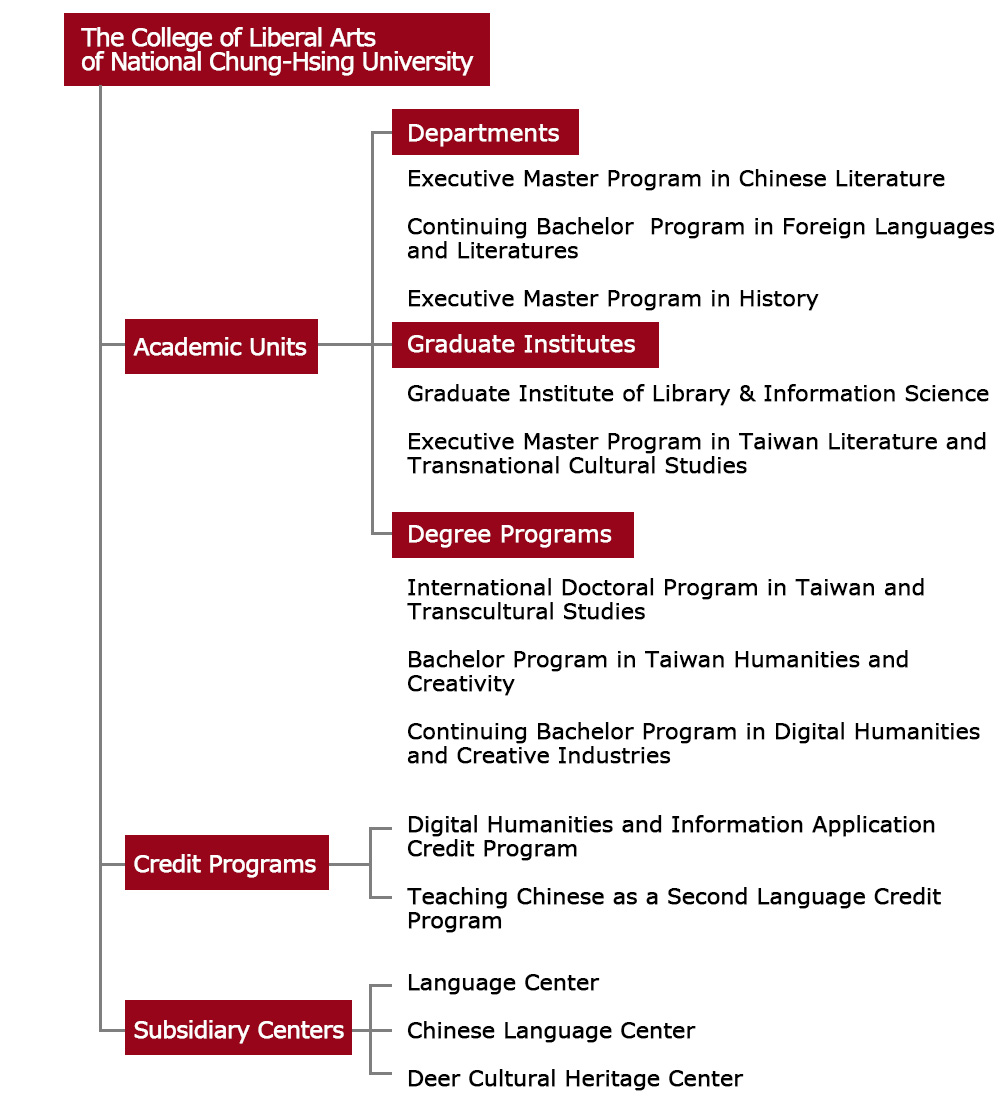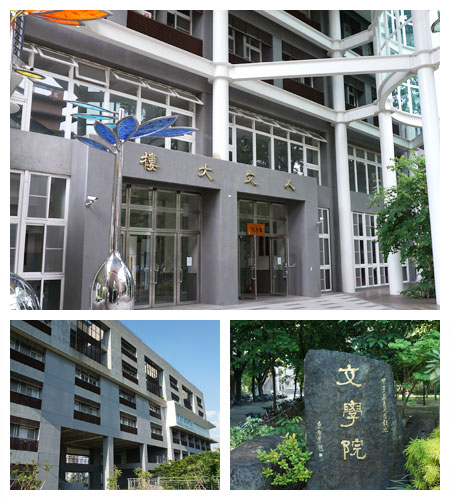Home About us Introduction
A Brief History of Our College
In autumn 1969, in addition to existing Colleges of Agriculture, Science and Engineering, Laws and Business, the former Provincial Chung Hsing University established the College of Liberal Arts, which expanded the categories of research and education of the university to include the six main disciplines of liberal arts, laws, business, science, engineering and agriculture. The change has brought great progress for the institution on becoming a comprehensive university.
The departments were established prior to the establishment of the college; the Department of Chinese Literature was established first in 1965, followed by the Department of Foreign Languages and Literatures and The Department of History in 1968; the three departments were eventually integrated into the College of Liberal Arts in 1969. Initially, the college accommodated into the Traditional Japanese wooden Kominka (old building of the Department of Plant Pathology) as the college hall. In 1976, we moved into the Hong-Dao Building, which was surrounded by Lyu-Chuan Canal, an exceptional environment for nurturing humanities and culture. In 1994, due to the expansion of the liberal arts majors, the college temporarily moved to the Teaching Complex Building while the Hong-Dao building was under reconstruction for additional spaces. In winter 2015, the refurnished Humanities Building was erected upon the Lyu-Chuan Canal. The College of Liberal Arts returned yet again to where it belonged and began its brand-new era.
Currently, there are three departments, two individual graduate institutions, three degree programs and three subsidiary centers under the administration of the College of Liberal Arts. The college is committed to but not limited to the development of the following disciplines: literature, history, philosophy, languages, as well as library and information science. Our mission is to cultivate students’ competency in the areas of humanities, languages, information, and develop their care and vision of local and global society.
Organization Chart


Features
- Curriculum planning is formulated with both theory and practice in mind. The cross-disciplinary Digital Humanities and Information Application Program as well as the Bachelor Program in Taiwan Humanities and Creativity, established in 2020, are both programs that actively facilitate interdisciplinary learning. Students are trained to integrate professional knowledge of humanities and the use of digital information to enhance their competitiveness for further education and employment.
- Our publications to promote academic research include: Chung Hsing Journal of the Humanities; Journal of the Chinese Department, National Chung Hsing University; Chung Hsing Wen Yuan (中興文苑); Wen Feng(文風); Chung-Hsing Journal of History; Chung Hsing Shih Hsueh (中興史學); The Chung-Hsing Lake Literary Prize Collections; Intergrams.
Goals, Basic Disciplines and Core Competencies
- To cultivate talents who possess humanities literacy and digital technology literacy; innovative mind and communication skills; and local care and global vision.
- Humanities and social cognitive skills
- Digital technology and information literacy
- Communication and expression skills
- Language proficiency
- Global vision